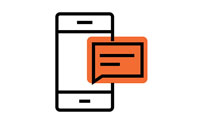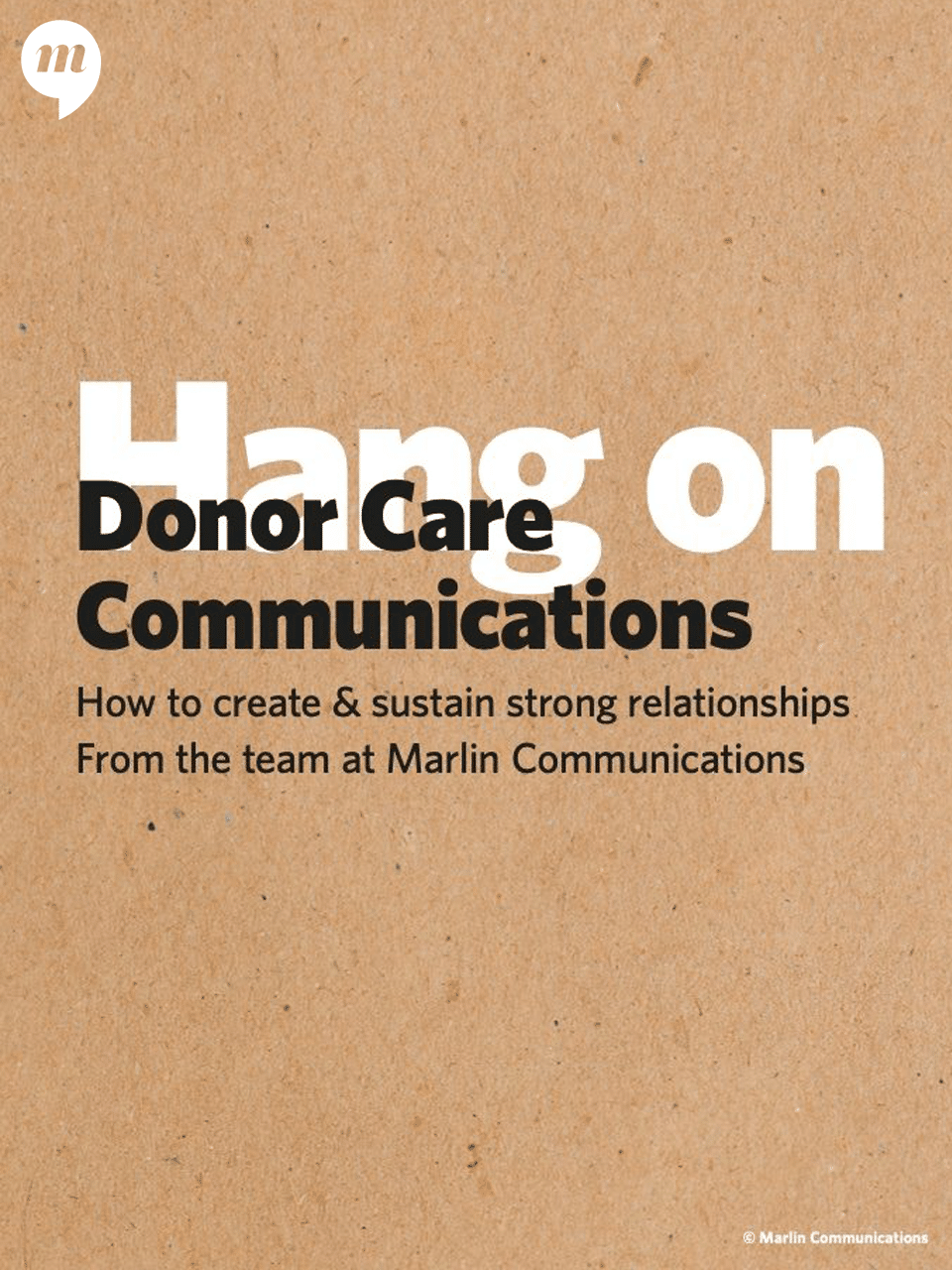
Donor retention for 2024 (and make it digital)
— Written by Nicole Jensen, Digital Campaign Specialist, Marlin Communications
In July 2023, FIA, in partnership with More Strategic, presented part two of their Cost of Living & Giving webinars. Self-reported by Australian and New Zealand donors, cost of living pressure was given as the top reason for not donating to charities in 2023. The research was clear: “the cost of living is the primary issue of concern for Australians, surpassing all other issues by a significant margin.”
Meanwhile, The Benchmarking Project’s 2023 report reminded us that “retained donors are critical to stability and growth.” And it’s easy to see why. The report found worrying declines in acquisition over the past five years, with individual giving acquisition down 7%, and regular giving acquisition down 22%.
On retention, The Benchmarking Project’s findings are significantly more positive, with 90% of regular giving income (in 2023) coming from retained and reactivated donors from 2022, “demonstrating how critical retention and recovery activities are within regular giving programs.”
Add to that the cost of living pressures, and increasing acquisition costs, it’s never been more important to retain and engage donors.
Here are some key insights and strategies for retaining donors, using digital technology:
- Know your donors
- Maintain a personal connection
- Lead with your value proposition
- Communicate regularly, and keep it fresh
- Make giving convenient
- Foster a sense of community
- Acknowledge and thank donors
Know your donors
There are a number of methods available when it comes to collating and analysing donor data. Design thinking, machine learning, AI, donor surveys, scoring matrices and segmentation are all great ways to identify problems and find solutions to retaining donors.
As well as the usual data on donations, such as proximity to cause, their specific interest in your charity (maybe which of your services or outcomes they support most), and supporter technology and spend habits, you’ll also want to track:
- Overall retention rate of donors
- First-time donor retention rate, and
- Repeat donor retention rate
But of course, one size does not fit all! Segmenting donors can help you get more specific on the data you collect. This, in turn, can be used to improve communications, resulting in lower digital advertising costs and increased returns.
Machine learning and AI are well and truly here, but using it does have caveats. Ensure you have a methodology, and a code or ethical-use policy to share with supporters.
Bonus tip: The better the quality of donor data, the more effective your lookalike audiences will be when it comes to acquiring new donors through digital advertising.
Maintain a personal connection
When you authentically communicate to a human being as a human being, your influence is stronger, and more effective than if it were too polished and automated. This is even more important in an age where scam calls are rampant – and despised!
Personalise your communication with your donors. Address them by name and report back on specific causes or campaigns they have supported. Within two days of a donation, give them a call or text if you can. Some CRM or social media management systems can even tell you if a commenter on Facebook is a donor, enabling you to write a more personalised reply to their feedback. However you communicate with donors, be sure to show your appreciation, support their goals, and keep them informed of how their gift is making a difference.
Bonus tip: Communications from a contact that the donor cannot reply or relate to creates literal and social barriers, stopping them from seeing you as approachable. Scrap the ‘noreply,’ and choose your email signatories wisely.
Lead with your value proposition
Every donor has one big question you need to answer: “What’s in it for me?” This is where your value proposition comes in.
Your value proposition is not your mission statement, but rather your opportunity to tell a donor why they should donate to you, rather than another charity – or not at all.
Communicating this may mean segmenting your audiences by context and priorities (for example, comparing a once-off standard value donor to a mid-value regular giver) and laying out different value propositions.
Bonus tip: Try one of these 4 A/B tests for your value proposition
Communicate regularly, and keep it fresh
Regular communication is crucial for building and maintaining a relationship with donors. Share meaningful updates on your work and the impact the donor is making. This can be done through:
- Thank you letters or emails
- Impact reports and summaries
- Newsletters and supporter magazines
- ‘Surprise and delight’ acts such as calling donors, or sending them a card
- For larger budgets, a digital ad campaign to re-engage and show appreciation (without asking for further donations)
How often you get in touch with supporters will depend on your current activities, however it’s generally a good idea to contact them directly at least once a month.
You may want to test how often you contact donors. As an example, our friends at NextAfter tested the impact of sending an additional email per week. With this extra cultivation email (no donation ask!), they increased revenue among existing donors by 21%, AND increased lapsed donor revenue by 14%.
Bonus tip: As always, context is everything! Imagine a donor opening your latest appeal email on mobile while they’re on the couch at the end of a long workday. Does your message cut through the TV they’re also half-watching? Try using these three elements:
- Make it helpful.
- Make it donor-centric.
- Make it personal and specific.
Make giving convenient
Payment methods have changed a lot in recent years, thanks to mobile payments, the phasing out of cheques, crowdfunding, and microdonation apps such as Share the Meal or The Difference. Even influencer platforms like Patreon and Ko-fi are growing in popularity where donors have their own platforms.
Did you know that Australia has the third-highest cryptocurrency adoption rate in the world? It’s estimated that between 31-38% of Gen Y and Z uses cryptocurrency in some way.
In addition, donations through social media platforms have increased 13% and SMS donations are also up 8% from 2022.
Even if cryptocurrency seems a bit far off to most organisations, charities should offer a variety of giving options, including online, mobile (PayPal, Apple & Google Pay are a must!), accepting microdonations, recurring donations, and text-to-give. This makes it easy for donors to give, and helps to build a regular pattern of giving.
Bonus tip: Before listing your organisation on third-party charity directory websites, make sure your existing donor base is interested. Look at how your donors make their donations and see if the more common ones are used on the directory’s website.
Foster a sense of community
When donors feel like they are part of a community, they are more likely to continue their support. Encourage donors to connect with and support each other, and create a community around your cause and work. This can be done through Facebook Fundraising, an online event, a group or forum; or offline with exclusive events for VIPs.
FIA research from mid-2023 found that donors expect to do MORE activities that do not cost money (like volunteer, organise fundraising events, donate goods to an op shop, sign petitions, etc) over the next 12 months.
It might feel like a distraction from revenue-raising, but with non-financial engagement from donors increasing, it is valuable to offer other ways for donors to get involved in your work. This can include: volunteer opportunities, events, or tours of facilities. When donors feel connected to the cause, they are more likely to continue financial support and turn into advocates.
Bonus tip: Donors are supportive of initiatives to increase giving, especially initiatives that don’t cost them anything. Promote your corporate programs widely, so that individual donors feel they are backed by large businesses who are also financially supporting your cause. A webinar or Facebook/Tiktok/Twitch live event with partners and influencers would go down a treat on Dollar Match Day!
Acknowledge and thank donors
A sincere and timely thank you can go a long way in retaining donors. Show appreciation for their support, and acknowledge their contributions in a meaningful way. This can include a personalised thank you note, or a mention in the charity’s newsletter.
Bonus tip: The most immediate retention opportunities use dynamic website content to personalise thank you pages. You could also test including a short form with follow-up questions like “what other information would you like to receive from us?” or “would you be interested in X, Y or Z?”. Not only will these potentially teach you more about your donor base, including this data in a CRM will then provide opportunities for personalising email journeys.
To summarise the above, donor retention requires communication with and giving back to your donors in new ways – digital strategies can help you achieve this. By focusing on these key strategies, charities can develop stronger and longer-lasting relationships with their donors.

To get a broader look at donor care strategies, download our guide on Donor Care Communications.
Alternatively, get in touch with us today to learn more about our Digital Fundraising, Donor Care and Data + Optimisation services.

